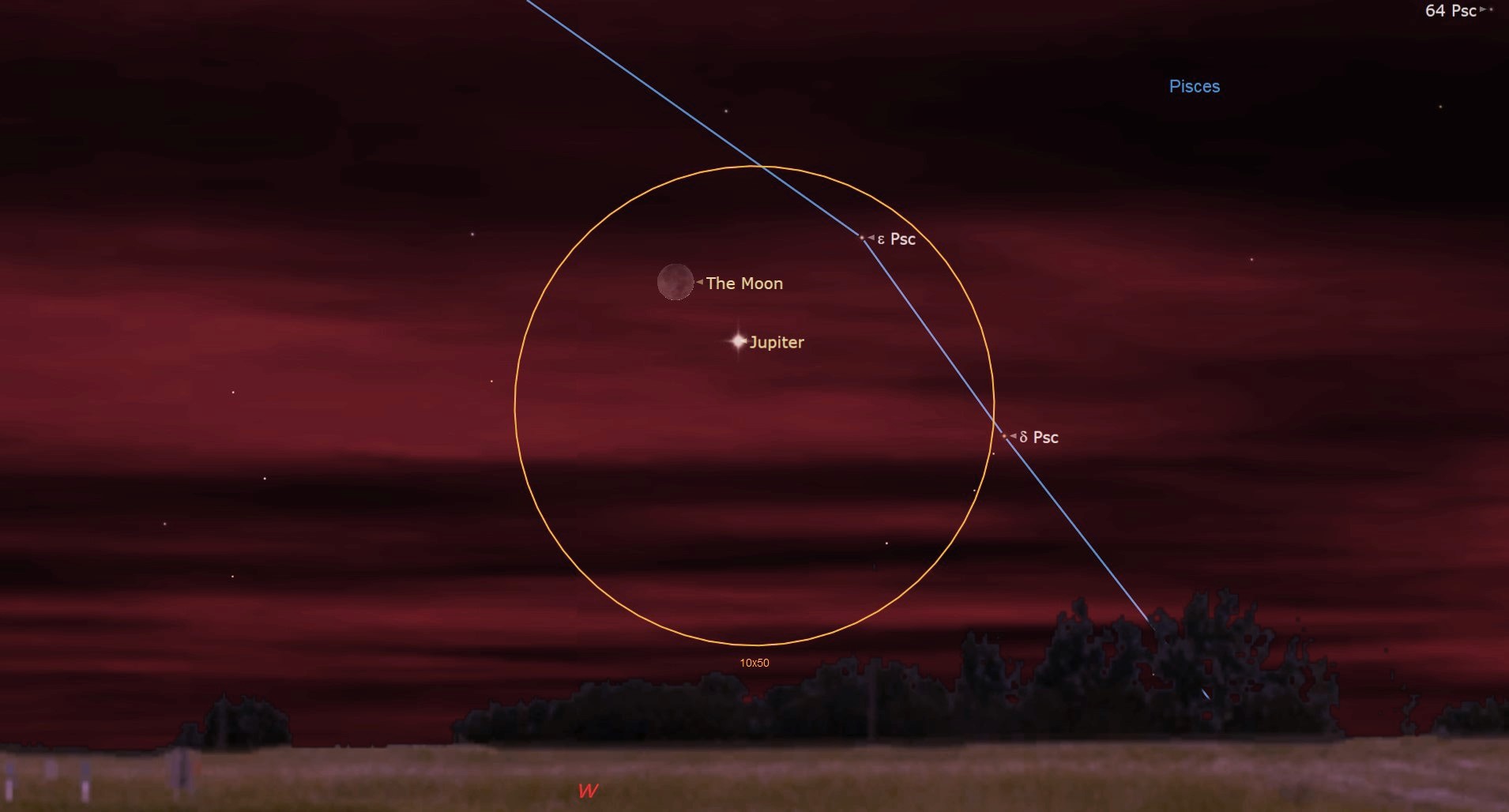See the moon and Jupiter meet in the sky tonight (March 22)
The nearly new moon sidles up to the solar system’s largest planet.

The moon has a date with Jupiter tonight (March 22), with the two bodies sharing the same right ascension in an arrangement astronomers call a conjunction.
At the same time, Jupiter and the moon will make a close approach in the night sky, an encounter astronomers call an appulse.
During the conjunction and appulse, the one-day-old new moon will pass just to the south of Jupiter in the sky. According to In the Sky, from New York City the moon will be visible from 7:36 a.m. EDT (1136 GMT), soon after it rises over the horizon.
Related: Night sky, March 2023: What you can see tonight [maps]
The conjunction will be observable until around 8:21 p.m. EDT (0021 GMT on March 23), when the moon and Jupiter set. Both objects will be located in the constellation of Pisces. The moon will have a magnitude of -8.3 while Jupiter's will be -2.0, with the minus prefixes indicating particularly bright objects in the sky over Earth.
The pair will have an angular separation from the sun of 14 degrees, and, as this observation could involve some daytime astronomy, precautions should be taken to avoid looking directly at the sun. (Your outstretched fist held at arm's length covers about 10 degrees of sky.)
Though the moon and the gas giant planet will be close in the sky tonight, this is an effect of our perspective from Earth; the two are still separated by a tremendous distance in the solar system.
Breaking space news, the latest updates on rocket launches, skywatching events and more!
While the moon is just an average of 239,000 miles (384,400 kilometers) from Earth, Jupiter is over 2,000 times farther from our planet, at an average of 484 million miles (778 million km) away.

Looking for a telescope to see the planets in the night sky? We recommend the Celestron Astro Fi 102 as the top pick in our best beginner's telescope guide.
The reason the two objects are similar in angular size in the sky during the conjunction is because of how much larger Jupiter is compared to the moon. The gas giant's diameter is about 87,000 miles (140,000 kilometers), roughly 11 times that of Earth. Our planet itself is four times wider than the moon, which has a diameter of 2,159 miles (3,475 km). This means Jupiter is around 44 times wider than the moon!
Despite making a close approach during the conjunction, the moon and Jupiter will still be too widely separated to be seen in the narrow field of view of a telescope. The two celestial objects will be visible together with a pair of binoculars, however.
If you’re hoping to catch a look at the nearly new moon or Jupiter during the conjunction close approach, our guides to the best telescopes and best binoculars are a great place to start. If you’re looking to snap photos of the night sky in general, check out our guide on how to photograph the moon, as well as our best cameras for astrophotography and best lenses for astrophotography.
Editor’s Note: If you snap the conjunction between the moon and Jupiter and would like to share it with Space.com’s readers, send your photo(s), comments, and your name and location to spacephotos@space.com.
Follow us on Twitter @Spacedotcom and on Facebook.

Robert Lea is a science journalist in the U.K. whose articles have been published in Physics World, New Scientist, Astronomy Magazine, All About Space, Newsweek and ZME Science. He also writes about science communication for Elsevier and the European Journal of Physics. Rob holds a bachelor of science degree in physics and astronomy from the U.K.’s Open University. Follow him on Twitter @sciencef1rst.
